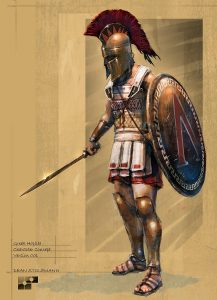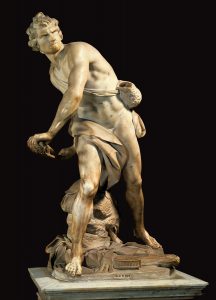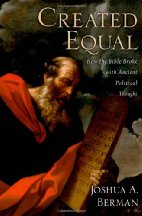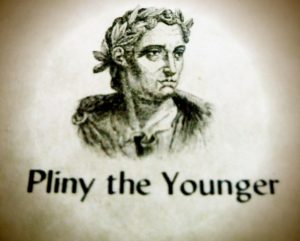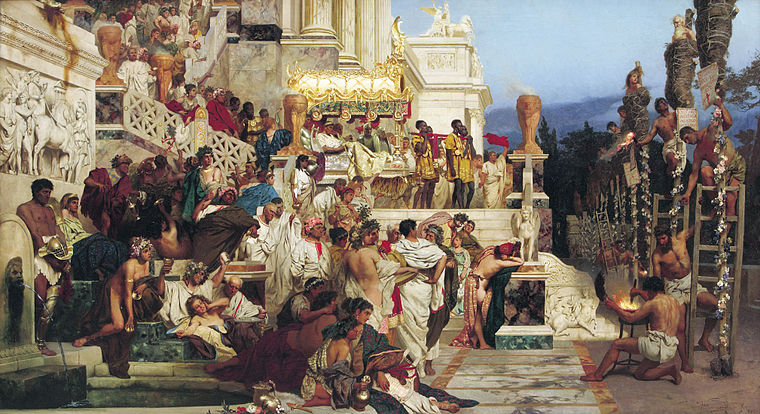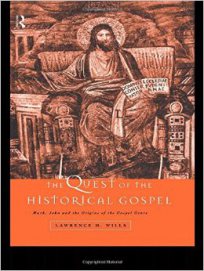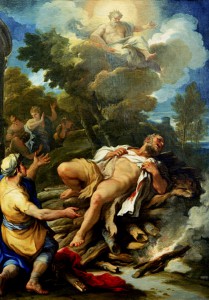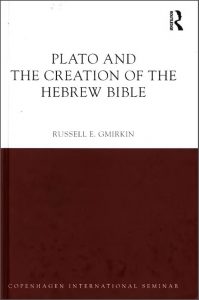 The Bible’s narratives evidently share much of the cultural heritage of ancient Syria and Mesopotamia but zoom in for a more detailed study and one arguably sees many signs of a distinctively Greek influence. That’s the argument of Russell Gmirkin in Plato and the Creation of the Hebrew Bible. Previous posts in this series that include explanations of how Greek sources could have influenced the biblical authors are:
The Bible’s narratives evidently share much of the cultural heritage of ancient Syria and Mesopotamia but zoom in for a more detailed study and one arguably sees many signs of a distinctively Greek influence. That’s the argument of Russell Gmirkin in Plato and the Creation of the Hebrew Bible. Previous posts in this series that include explanations of how Greek sources could have influenced the biblical authors are:
- Plato and the Creation of the Hebrew Bible
- The Pentateuch’s Debt to Greek Laws and Constitutions — A New Look
- David, an Ideal Greek Hero — and other Military Matters in Ancient Israel
- Some preliminaries before resuming Gmirkin’s Plato and the Creation of the Hebrew Bible
Nothing is more essentially “Biblical Israel” than its Twelve Tribes. Genesis is for most part the story of the origins of these twelve tribes. The history of Israel is a history primarily of the tribes of Israel, mostly twelve at first, but then divided into two kingdoms of ten and two. One of the tribes was assigned for the priesthood and therefore not given a territorial allotment, but two of Joseph’s sons were each given land areas to maintain the all-important twelve inheritors of the land while the sons of Levi became a thirteenth tribe. Always twelve, though sometimes ten and sometimes thirteen.
So very “biblical”, yet so very Greek as known about Athens and various Greek colonies from the writings of Plato and Aristotle housed in the Great Library of Alexandria.
It’s a fascinating observation. Gmirkin’s argument is as follows.
Tribal groupings in the Ancient Near East generally consisted of literal kinship groupings. When we read about the tribal organization of Israel in the Hexateuch (the Pentateuch plus Joshua), however, we find something different. Most distinctive are the clear geographic boundaries that marked the set locations of each tribe. Furthermore, each tribe’s geographic area was determined by lot. Take the case of the tribe of Zebulun in Joshua 19:
10 The third lot came up for Zebulun according to its clans:
The boundary of their inheritance went as far as Sarid. 11 Going west it ran to Maralah, touched Dabbesheth, and extended to the ravine near Jokneam. 12 It turned east from Sarid toward the sunrise to the territory of Kisloth Tabor and went on to Daberath and up to Japhia. 13 Then it continued eastward to Gath Hepher and Eth Kazin; it came out at Rimmon and turned toward Neah. 14 There the boundary went around on the north to Hannathon and ended at the Valley of Iphtah El. 15 Included were Kattath, Nahalal, Shimron, Idalah and Bethlehem. There were twelve towns and their villages.
16 These towns and their villages were the inheritance of Zebulun, according to its clans.
See also Deuteronomy 4.5, 14; 5.31; 6.1; 12.1; cf. 11.2 and Joshua 13, 15-19, 21.
Such a system is unknown in the Ancient Near East
But people move. Families need to find better opportunities elsewhere when conflicts increase and resources decrease. A tribe defined by a geographical region is likely to be a fictive kinship group.
What we see here are two concepts of tribes. In one instance a tribe is identified by a geographical area; other times a tribe is understood to be kinship group descended from a common ancestor.
Both concepts sit side-by-side in the Biblical account.
Such a system is unknown in the Ancient Near East, where tribal designations reflected either real kinship groups or in some cases perhaps social classes, but did not typically correspond to bounded geographical areas or form the formal basis for provincial organization. (Gmirkin 2016, p.21f)
Unknown in the Near East, perhaps, but well known in the Greek world.
Just as Joshua is said to have done, Greeks who set out to colonize new regions were depicted as first conquering a new territory and then dividing it up equally (compensating for areas of different quality). Scribes were appointed to mark out the different allotments that became the basis of tribal units. As in Israel, a primary concern of many comparable Greek colonies was to guarantee the inalienable right of land ownership and avoid an impoverished landless class or debt slavery. So much for the ideal, and it was an ideal that was espoused both by Plato in his Laws (3.684e and 5.736c) and Aristotle in his Politics (2.1266b and 6.1319a). The reality was that attempts to so redistribute land led to conflict. New colonizing expeditions sometimes set out with the same ideal in mind to be the foundation of their new society.
As in the Greek world we see in the Bible the same ideals, methods and functions of the tribal systems (a combination of fictive tribes based on geographical area that in fact cut across kinship groups and real tribes): land was to be divided equally according to different needs and quality; scribes were appointed to mark out the land allotments and divide them among the people; the allotted land was to be inalienable; the tribes became the basis of various administrative functions including military enrollment. As in both Athens (after late sixth century reforms) and biblical Israel citizens were identified by both their tribe and home district (village in Israel; the district or deme in Athens).
Each tribe in the Greek world was assigned its eponymous god while in Israel, as we know, we have the twelve eponymous patriarchs.
Interestingly Greek tribal divisions, both in Athens and various colonies, were by tens or twelve. Variations of both were found in Athens.
Did the Greek ideals then become the basis of the biblical political-economy? Gmirkin thinks so and I suspect he’s right.
The arguments goes beyond the kinds of points in common that I have mentioned above. What I find especially significant is Gmirkin’s point that quite unlike anything found in the literature of the Near East is the common interest in the Bible and Greek philosophical literature (Plato’s Republic, Laws and Aristotle’s Politics) with the establishment of an ideal state. When this common interest that extends to discussions of ideal geographical boundaries and specific administrative divisions and then when we go on to find the particular ideal solutions to these questions overlapping, I believe Gmirkin presents a strong case.
Continuing. . . .
Like this:
Like Loading...
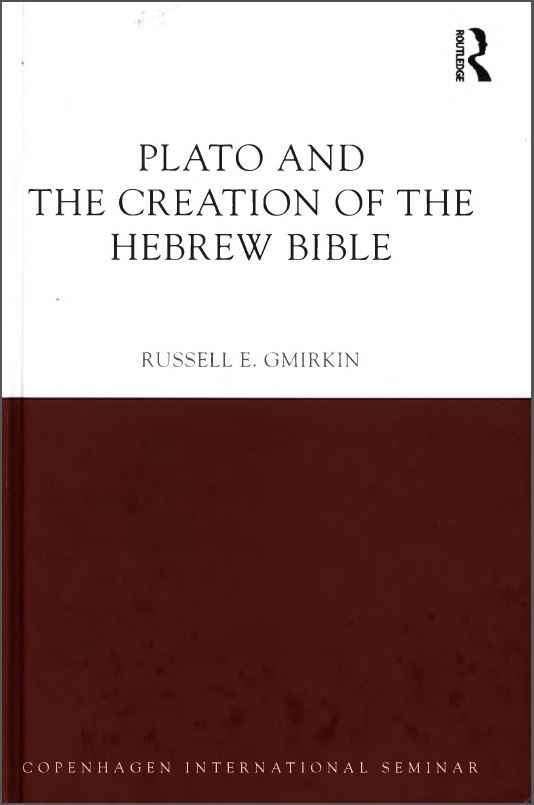 This post covers just one small set of details addressed by Russell Gmirkin in Plato and the Creation of the Hebrew Bible, legal proceedings. I am keen to get to the next chapter where laws themselves are compared, but to take the question of “Biblical” links with the Greek world as distinct from the Near Eastern culture in its entirety I need to pause and grasp the particulars of each argument. I try to present as much information as necessary for each of us to come to our own conclusions — or questions.
This post covers just one small set of details addressed by Russell Gmirkin in Plato and the Creation of the Hebrew Bible, legal proceedings. I am keen to get to the next chapter where laws themselves are compared, but to take the question of “Biblical” links with the Greek world as distinct from the Near Eastern culture in its entirety I need to pause and grasp the particulars of each argument. I try to present as much information as necessary for each of us to come to our own conclusions — or questions.

